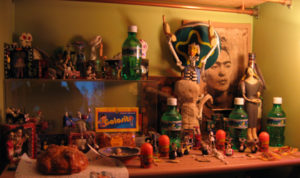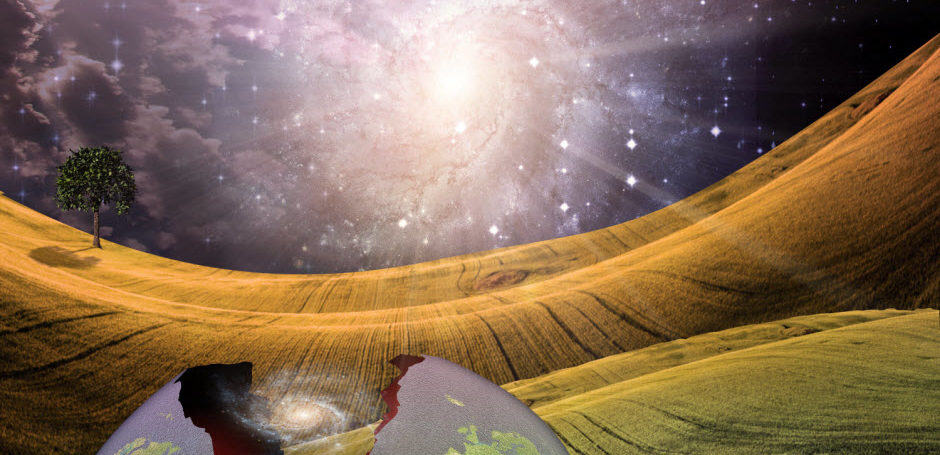 Halloween is considered by many to be a time when the veil between the worlds of the living and dead is considered to be particularly thin.
Halloween is considered by many to be a time when the veil between the worlds of the living and dead is considered to be particularly thin.
I’ve always loved beginnings and times of fullness, like the waxing and full moon and the seasons of spring and summer, with their long days. Perhaps this is because, at a deep, bodily, organic level, and also symbolically, these times evoke the mornings and afternoons of life. In the spring, the new green life emerges from the Earth and the days grow longer to their peak in summer, when the days seem never-ending.
This year, though, since a number of people who are very dear to me have passed, I am welcoming autumn, with its shorter, cooler days, where I feel the early nightfall wrapped around me like a blanket. I’m finding a deep restfulness there. Soon the leaves will fall from the trees, and their bare branches will reach into the gray sky, giving the appearance of death. The days will grow continually shorter as we move towards the Winter Solstice, the depth of winter. Away from the cities, especially in regions that have snow, there is a natural silence and peace. We may notice fewer animals and insects. In the absence of artificial light, we too become slower and quieter. And then just as we reach the darkest point of winter, each day begins to become longer, moving towards the apparent rebirth of life in the spring.
It is therefore natural that in many cultures in the Northern Hemisphere, including ours, autumn—especially late autumn–is actually and symbolically associated with the space between the bursting life of the summer and the death and peace of winter. It is the time of year when we honor and perhaps connect with our deceased loved ones. Christians of European descent call this time All Hallows Eve or Halloween. Although Halloween has become in many places a holiday of costumes and candy–which I collected myself in large amounts as a young girl!–its roots are in honoring the dead in a vigil.
Halloween was likely patterned on the ancient Gaelic observance of Samhain, which occurred at the same time. For the Celts, as well as others, Samhain is thought to be the time when the veil between the world of the living and the dead is thinnest, when it is easiest for us to communicate with the departed and for them to communicate with us. Many in Mexico celebrate the Dia de los Muertos, the Day of the Dead, October 31 through November 2, to remember and honor deceased loved ones. As part of this ceremony, participants create altars for the dead, covering them with flowers, memorabilia, and the deceased’s favorite foods, and sharing fond stories about those who have passed. I think this is a wonderful idea and that this practice can potentially feed our souls in a way that candy (perhaps with the exception of chocolate) cannot.
I used to wonder how the progression of the seasons could actually physically relate to the cycle of life and death, and so how this time of year might relate to the veil between the world of the living and the world of the dead. I have come to believe that this connection arose from our deep organic experience, which in Western cultures, is usually subconscious. We feel the cycles of life in our bodies and in the whole of the natural world. It is deep in our psyches including our collective psyche (I will write more about this in future articles).
This broad and deep topic of life after death opens a number of questions. Perhaps foremost among these is why we might believe that some part of our loved ones (and of us) survives the death of our bodies. We might have a number of reasons for wanting to know:
- Many of us have lost or fear losing people who are very dear to us. It can be a great comfort to feel our loved ones who have passed or to believe that our loved ones continue, free of the pain of their injury or illness.
- We have an interest in this question for ourselves. Many of us want to be around for what happens next; we want our experience to continue in some form. The belief that death is the end of our experience is a source of anxiety for many.
- The idea that we continue on after death can give us hope for healing and resolution. Life can be difficult, and sometimes we don’t find justice and healing in this life. If our experience continues after death, we may yet still find healing in the afterlife or or in a future life.
I believe that more closely considering the evidence that some part of us survives the death of our body can eliminate much unnecessary suffering increase our hope and our courage here in this life.
In some future articles, I will explore questions such as
- What are some good reasons to believe that our experience continues after the death of our human body?
- What is the nature of the world we experience after death, and how does it relate to the world of our ordinary sensory experiences?
- How we might more consciously experience connection to our loved ones who have passed?
I invite you to share your experiences and thoughts relating to life after death and loved ones who have passed in the comments below.
Note: This article was originally published in October 2014 and was updated in October 2017.
Like this blog?
You can automatically receive new blog posts by email by subscribing (in the upper-right-hand corner of this page.
Join our community!
Connect on Facebook, Twitter, Instagram
Share this blog post.
